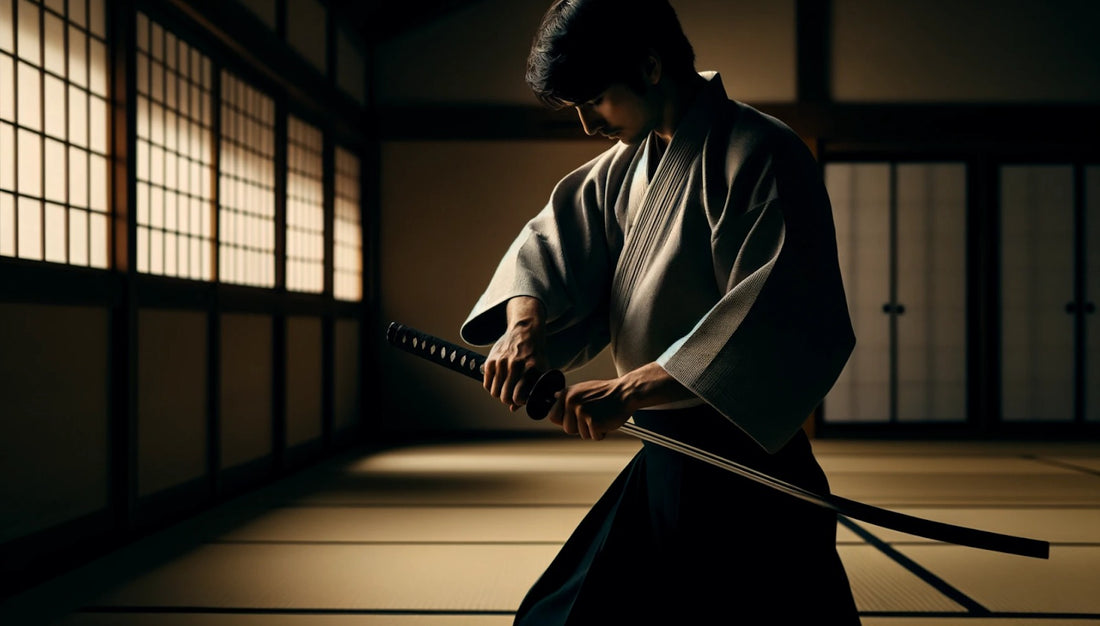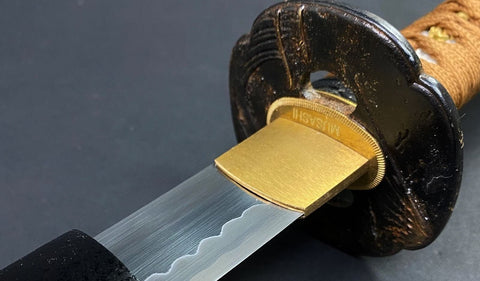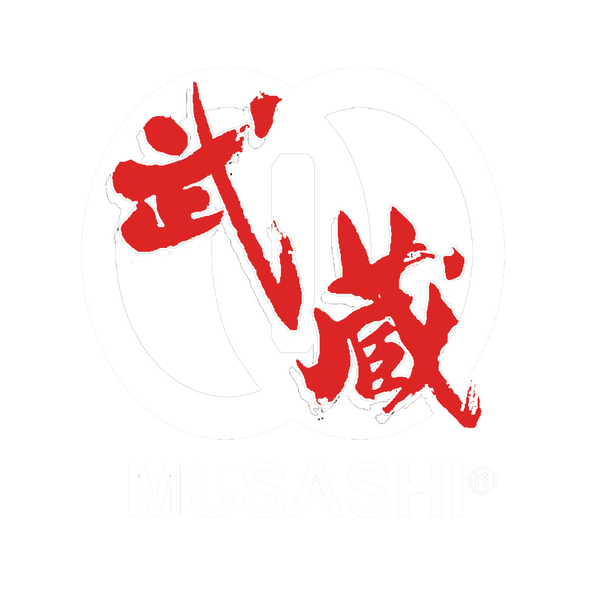
Hey there, fellow sports lover and martial arts enthusiast! Have you ever been captivated by a katana's elegance and deadly precision in action? There's something truly mesmerizing about this iconic Japanese sword, not just in its aesthetic but also in the rich history and discipline it embodies.
Today, I'm thrilled to embark on a journey with you, exploring the best martial arts for mastering katana techniques. Whether you're a complete newbie fascinated by this ancient weapon or a seasoned martial artist looking to deepen your expertise, this blog guides you to find the martial art that aligns with your aspirations and passion.

With its sleek design and lethal efficiency, the katana has held a place of reverence in the world of martial arts for centuries. Originating from feudal Japan, this sword isn't just a tool for battle; it's a symbol of the samurai's honor, discipline, and artistry.
The allure of the katana goes beyond its physical beauty; it's imbued with a rich history and a philosophy that teaches respect, precision, and the pursuit of perfection.
Choosing the right martial art for learning katana techniques is crucial. It's about finding a discipline that resonates with your personal goals, whether you seek to master the art for fitness, self-defense, or spiritual enrichment.
Each martial art offers a unique approach to katana training, emphasizing different aspects of swordsmanship, from the graceful yet swift strikes in Kenjutsu to the mental discipline and focus required in Iaido.
I aim to help you navigate this diverse landscape, enabling you to select a martial art that teaches you how to wield a katana confidently and enriches your life with its more profound philosophical teachings.
Understanding the Katana
The History and Evolution of the Katana
The katana, an iconic Japanese sword, evolved from the earlier "Tachi" during the late Kamakura Period (1185–1333) when the samurai class began to prominence. Initially designed for two-handed use and worn with the edge facing upward, the katana facilitated swift drawing and striking movements in battle. Over the centuries, as the demands of samurai warfare evolved, so did the katana, transforming from a mere weapon into a work of art and a profound symbol of the warrior's soul.
Characteristics of the Katana
The katana is renowned for its distinctive appearance: a curved, slender blade combining unparalleled sharpness and a tough, flexible spine. This design allows for both powerful cutting strikes and precise thrusts.
Its unique construction method sets the katana apart, involving the folding and forging of steel to create a resilient and durable blade. The meticulous crafting process takes several months for a single sword and forms the distinct hamon, which cannot be replicated due to its highly complex forging techniques. This results in a weapon as aesthetically striking as lethal in combat.

The Art of the Katana
But the katana is more than just a sword; it symbolizes the samurai's ethos, embodying the virtues of honor, discipline, and mastery over oneself. The art of wielding a katana goes beyond physical skill; it involves a profound spiritual discipline, requiring the practitioner to harmonize their mind, body, and spirit.
This philosophy emphasizes swordsmanship techniques and character development, instilling values of respect, patience, and diligence.
In mastering the katana, one does not simply learn how to fight; one embarks on a lifelong journey of self-improvement and discovery. The disciplines we're about to explore offer pathways to this profound mastery, each with unique focus and teachings.
Top Martial Arts for Katana Technique Mastery
Kenjutsu: The Classical Art of the Sword
Overview and History
Kenjutsu, translating to "the method, or technique, of the sword," is the umbrella term for all traditional Japanese swordsmanship schools. Originating from the samurai class of feudal Japan, Kenjutsu is the ancestor of many modern Japanese martial arts and was developed for battlefield combat and dueling.
Its techniques and teachings have been passed down through generations, evolving from practical military training into a discipline that combines physical, mental, and spiritual growth.
Key Techniques and Forms (Kata)
In Kenjutsu, kata, or forms, serve as the core instructional method. These predefined sequences simulate combat scenarios, teaching practitioners to respond to various attacks. Kata practice develops:
- Precision and Timing: Mastering the exact moment to strike or defend.
- Spatial Awareness: Understanding the distance and positioning relative to an opponent.
- Fluidity and Grace: Moving smoothly between stances and techniques.
Each school of Kenjutsu may have its own unique set of kata, reflecting its founders' particular philosophy and technique preferences.
How It Teaches Katana Mastery
Kenjutsu doesn't just focus on the physical wielding of the katana; it's an immersive exploration into the ethos of the samurai. Through rigorous training, practitioners learn to use the sword and embody its qualities: sharpness, resilience, and elegance.
The discipline cultivates a deep respect for the weapon as an extension of the self, fostering a mindset where strategy, ethics, and swordsmanship converge.

Iaido: The Way of Mental Presence and Immediate Reaction
Overview and History
Iaido is the art of drawing the sword from its scabbard, striking an opponent, removing blood from the blade, and then re-sheathing it, all in a few seamless movements. It's a practice that emphasizes readiness and precision, developed by samurai to prepare for surprise attacks. Unlike Kenjutsu, which is combative, Iaido is essentially performed solo, focusing on the perfection of form and movement.
Essential Techniques and Mental Discipline
Iaido techniques are meticulous, with practitioners performing kata that involve drawing the sword, cutting, and re-sheathing. The practice emphasizes:
- Mental Focus: Being fully present and prepared to draw the sword at a moment's notice.
- Breath Control: Using the breath to connect movements and calm the mind.
- Precision: Each motion in Iaido is deliberate and must be executed with exactness.
The mental discipline required for Iaido is intense, as the practitioner must maintain a calm, focused mind throughout the kata, ready to respond to any threat with immediacy and precision.

Its Approach to Unsheathing and Cutting
What sets Iaido apart is its philosophical approach to the katana. The sword is not merely a weapon but a tool for self-reflection and the cultivation of character. Drawing and re-sheathing the sword symbolizes the practitioner's control over life and death, emphasizing the importance of ethical judgment and the value of life.
Kendo: The Way of the Sword as a Modern Sport
Overview and History
Kendo, meaning "Way of The Sword," evolved from traditional Kenjutsu, adapting ancient techniques to a modern, sportive context. It's practiced wearing protective armor (bogu) and bamboo swords (shinai), allowing full-contact sparring. Kendo focuses on developing spirit, discipline, and character through rigorous training and competition, reflecting the samurai ethos in a contemporary setting.
The Sport Aspect and Its Contribution to the Katana Technique
Kendo is highly competitive, with practitioners, known as kendoka, engaging in matches (shiai) that test their skill, strategy, and spirit. This competitive aspect:
- Improves Reflexes and Decision-Making: Facing live opponents enhances the ability to make quick, strategic decisions.
- Builds Physical Endurance and Strength: Regular sparring and drills develop physical capabilities.
- Foster's Respect and Sportsmanship: The principles of mutual respect and honor are central, echoing the samurai code.
Equipment and Practice
Kendo practice is distinctive for its use of shinai and bogu, allowing practitioners to execute full-strength strikes safely. Training sessions typically include:
- Suburi (Swing Practice): Developing form and power.
- Kata: Learning traditional forms with wooden swords.
- Shiai (Sparring): Applying techniques in a competitive environment.
Comparison and How to Choose
Deciding between Kenjutsu, Iaido, and Kendo depends on your personal goals:
- Fitness and Physical Skills: If you're seeking a physically demanding practice with a competitive edge, Kendo might be the right choice.
- Spiritual and Mental Discipline: Iaido offers a deeply introspective path for those interested in the meditative aspects and the philosophy behind the sword.
- Historical Techniques and Combat Skills: If your fascination lies with the traditional battlefield techniques of the samurai, Kenjutsu provides a comprehensive exploration.
Ultimately, each art form offers a unique approach to mastering katana techniques, embodying the samurai's spirit, discipline, and physical prowess. Whether your interest lies in the competitive spirit of Kendo, the meditative focus of Iaido, or the rich traditions of Kenjutsu, there's a path for every practitioner.
Remember, the journey of learning is as important as the destination. Embrace each step with respect, dedication, and an open heart.
Training Essentials for Katana Martial Arts
Embarking on the journey of mastering katana techniques is as thrilling as it is demanding. The path is not just about learning to swing a sword but transforming your body and mind to embody the warrior's spirit. Here's how you can prepare:
Physical Preparation
Before wielding a katana like a master, your body must be up to the task. Fitness and conditioning are paramount. Here are some tips to get you started:
- Strength Training: Focus on building core strength and upper body power. Exercises like push-ups, pull-ups, and planks will give you the stability and strength needed for precise sword movements.
- Flexibility: Swordsmanship requires a great deal of flexibility, especially in the shoulders, hips, and hamstrings. Incorporate stretching into your daily routine to improve your range of motion.
- Cardiovascular Health: Stamina is vital in martial arts. Regular cardio exercises like running, swimming, or cycling will help you maintain high energy levels during training sessions.
Mental Preparation
The way of the sword is as much a mental discipline as a physical one. Focus, discipline, and respect are the foundational pillars.
- Focus: Learning katana techniques requires undivided attention. Practice mindfulness and meditation to enhance your concentration.
- Discipline: Progress in martial arts comes from consistent practice and dedication. Set a regular training schedule and stick to it.
- Respect: Respect for your instructors, fellow students, and the katana is essential. This respect fosters a positive learning environment and honors martial arts traditions.
Equipment
Starting your training journey requires the right gear. While specific needs may vary by martial art, here are the basics:
- Practice Katana: Beginners often start with a wooden sword (bokken) before progressing to a blunt metal sword for safety.
- Uniform: Most dojos require a traditional training uniform (keikogi and hakama).
- Protective Gear: Depending on the martial art, you may need gloves, chest protectors, and helmets, especially for sparring sessions in Kendo.
Finding the Right Dojo
Choosing the right dojo is crucial for your growth and enjoyment in learning katana techniques. Here's what to look for:
What to Look For in a Dojo
- Instructor Credentials: Ensure the instructors have verifiable experience and qualifications to teach martial arts.
- Community: A supportive and welcoming community enhances learning and practice.
- Environment: The dojo should be well-equipped, clean, and safe to facilitate practical training.
Online Resources vs. In-Person Training
While online resources can be a great supplement, they cannot replace the hands-on guidance and feedback you receive in person. Here are the benefits and limitations:
- Benefits of In-Person Training: Direct feedback, real-time corrections, and a sense of community are invaluable.
- Limitations of Online Resources: Lack of personalized guidance and the risk of learning incorrect techniques can hinder your progress.
Mastering katana techniques is a path of physical and mental transformation. It demands dedication, discipline, and the right environment to flourish. Whether your interest lies in the artistry, the fitness, or the history of the katana, finding the martial art that aligns with your goals is the first step toward mastery.
Ready to start your journey? Enhance your practice with the finest katanas from Musashi's Swords. Begin with the right equipment and embrace the discipline and beauty of katana techniques today.


